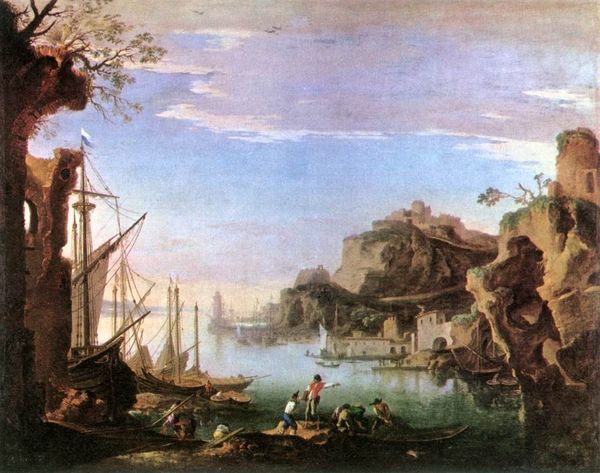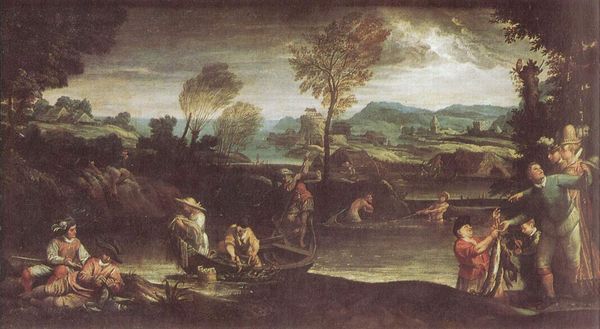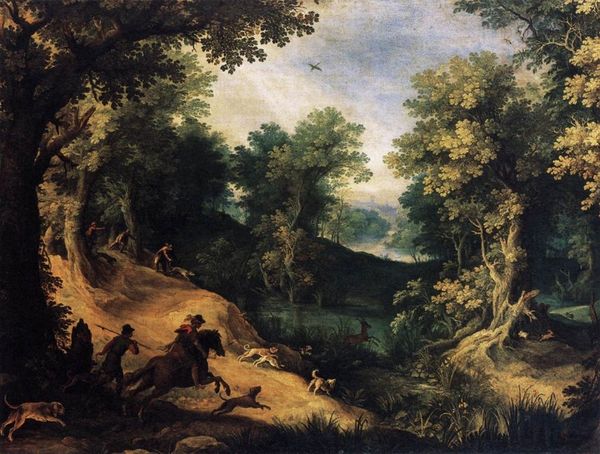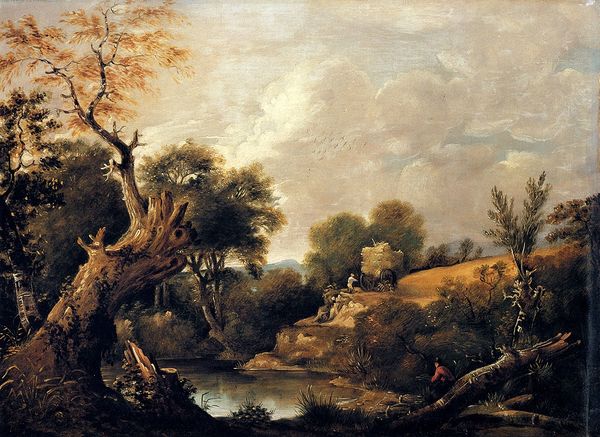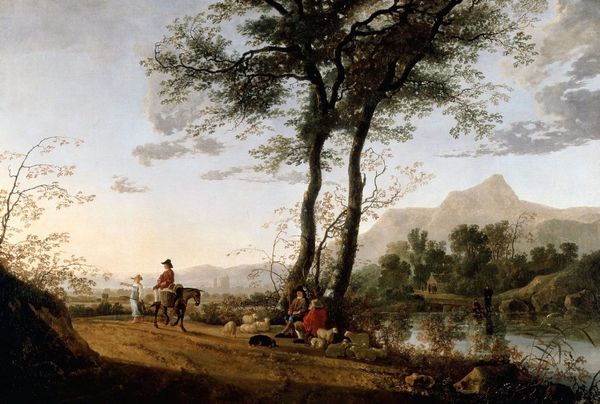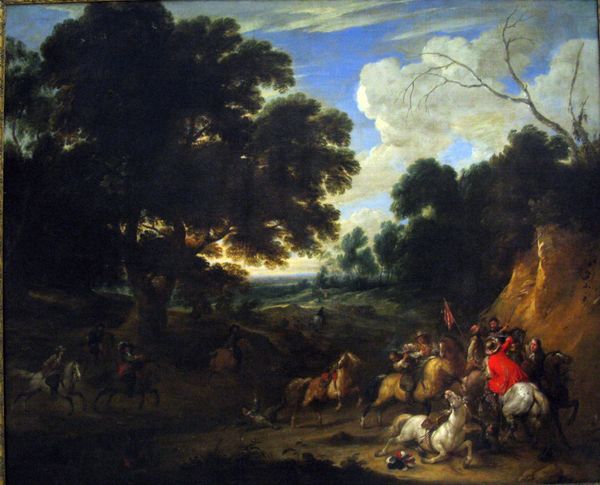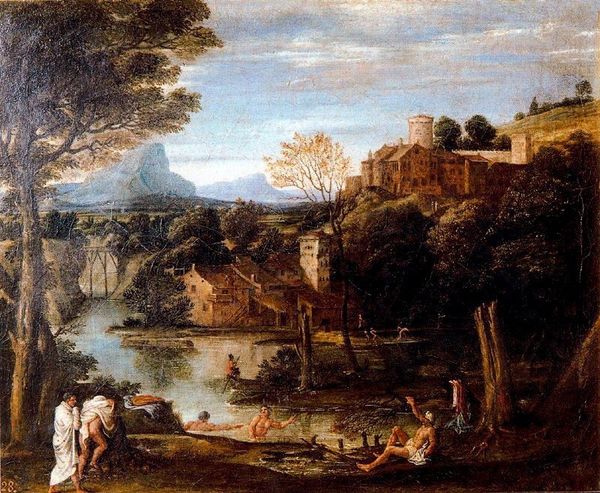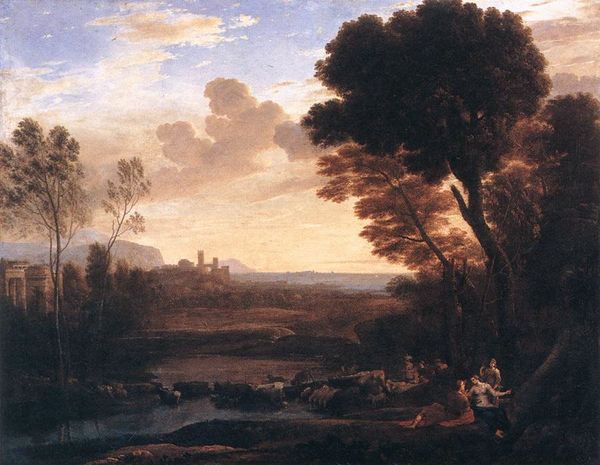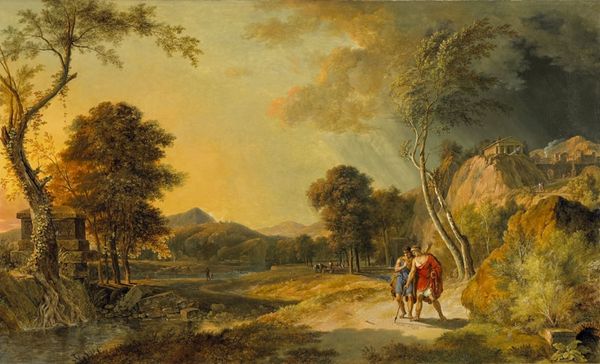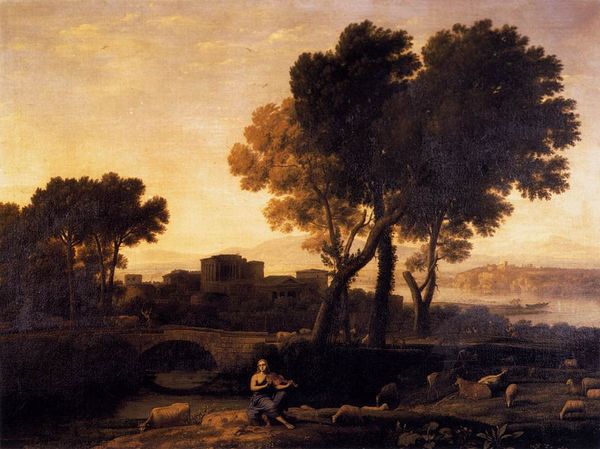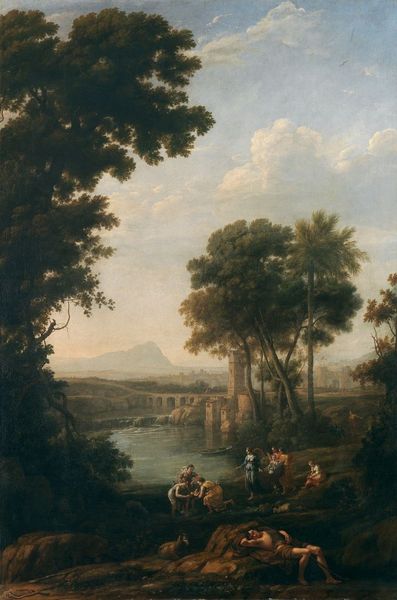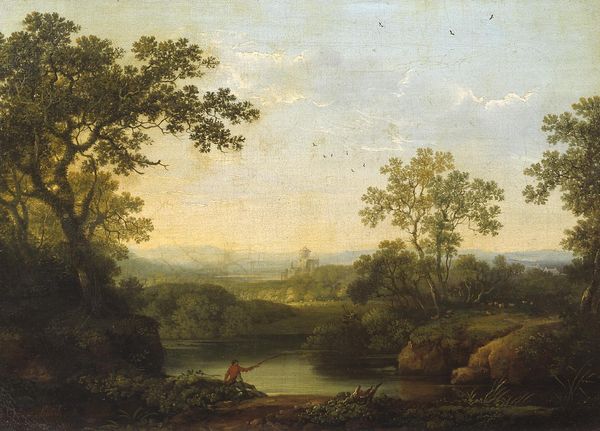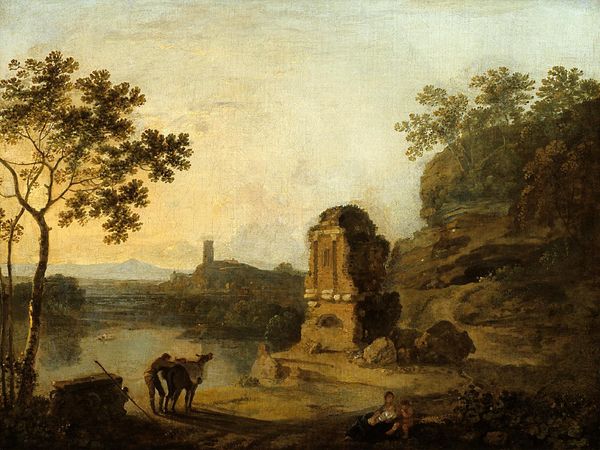
painting, oil-paint
#
tree
#
sky
#
allegory
#
narrative-art
#
baroque
#
fantasy art
#
painting
#
oil-paint
#
landscape
#
roman-mythology
#
classicism
#
mythology
#
history-painting
#
academic-art
Dimensions: 137 x 100 cm
Copyright: Public domain
Editor: Here we have Claude Lorrain's *The Abduction of Europa*, painted in 1655. The medium is oil on canvas, and it’s currently housed in the Pushkin Museum in Moscow. At first glance, it feels like a scene from a play, all staged and picturesque. What do you see in this piece? Curator: Oh, it is staged, deliberately so! Lorrain wasn’t just painting pretty landscapes; he was crafting worlds, really. He used light to direct the eye, notice how the brightest spot is right on Europa, perched on that… bull. A god in disguise, of course! Think of it like Baroque theater, but on canvas. He uses landscape not just as scenery, but as a character in the drama. It’s not really about *history*, it’s about conjuring a golden age, an Arcadia… a memory of an Arcadia. The narrative almost dissolves into this idealized dream-space. What do *you* feel from this dissolution, though? Editor: It's like the landscape itself is complicit, you know? Like it knows something we don't, or maybe doesn't care about the drama unfolding in the foreground. Does that make sense? Curator: Perfectly. Think of it this way, landscapes persist, and people... well, people get swept away. Lorrain’s light does some work here to draw our gaze. It washes over the scene. And who are these minor characters dotting the canvas? Editor: Well, I definitely have a better understanding now of the art historical context. It feels less random, more intentional in its construction, and more reflective of the historical events that may be suggested here, as you point out. Curator: Precisely! It's a journey back, but it’s one where the path itself is more important than the destination, you see?
Comments
No comments
Be the first to comment and join the conversation on the ultimate creative platform.
